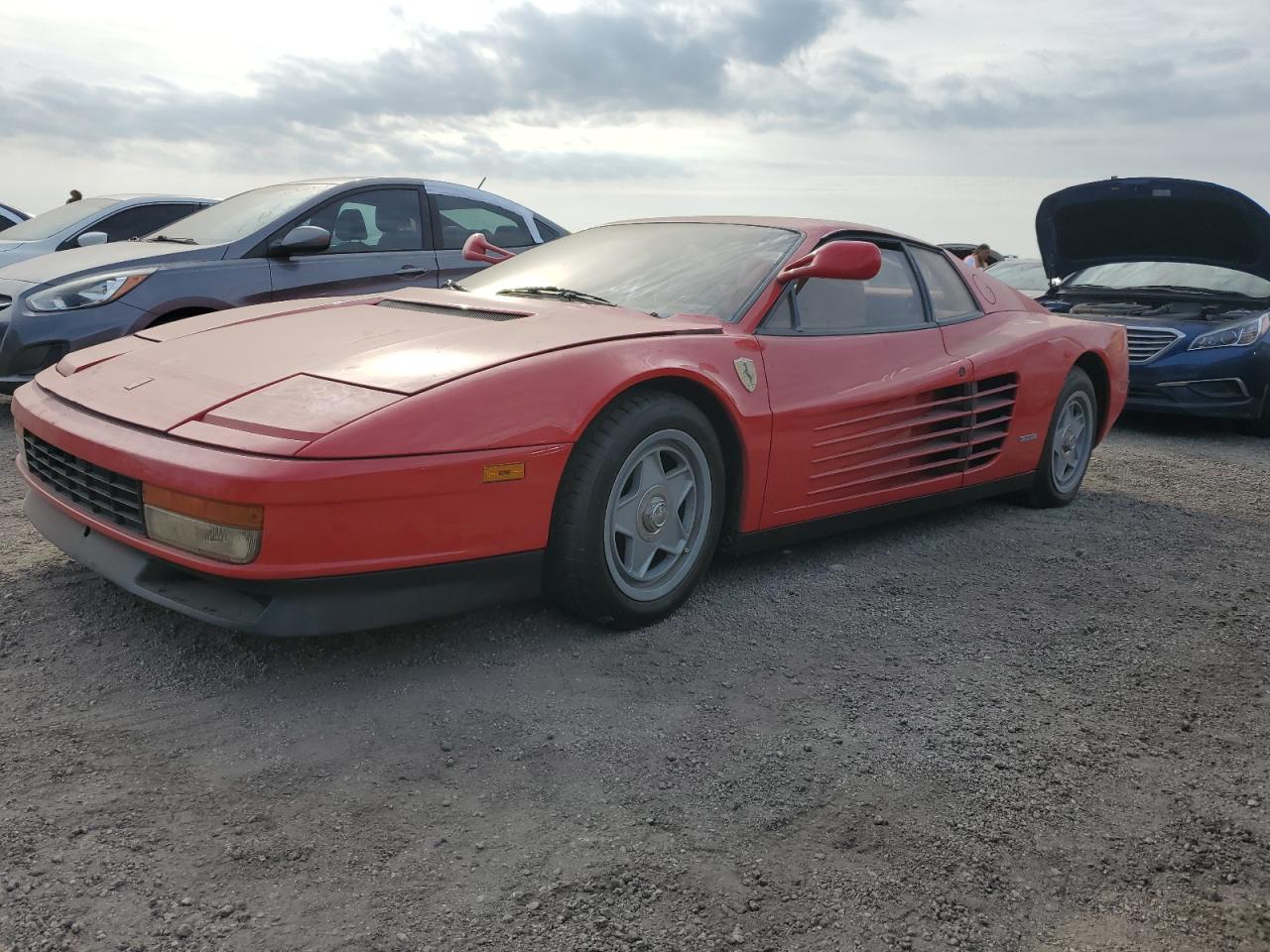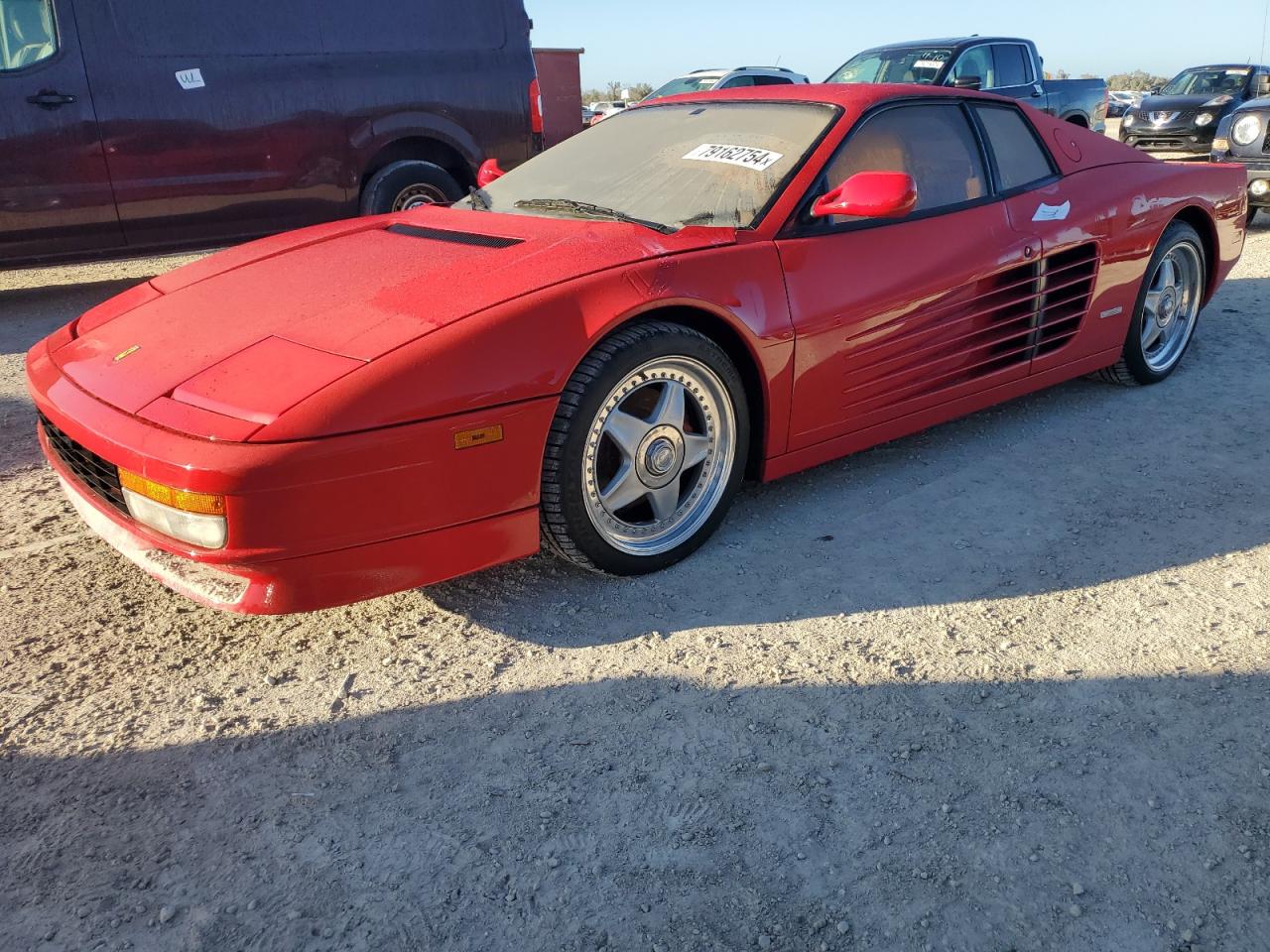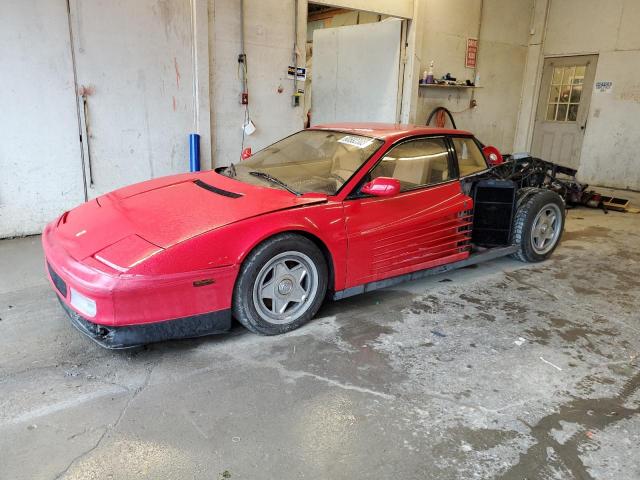1992 FERRARI TESTAROSSA | ZFFLG40A4N0091663
Lot details
- Sale Date2023-04-20
- Lot Number36080006
- ACV225000 $
- LocationBuckhannon (WV)
- Odometer25,328 miles (40,761 km)
- Primary DamageRIGHT SIDE
- SellerPhiladelphia Insurance Companies
Vehicle details
- Make
- Model
- Year1992
- FuelGasoline
- Engine4.9L V12 FI F
- TransmissionsUnknown
- Drive TypeRear Wheel Drive
Vehicle specifications
1
~$220,000
Engine: 4.9L naturally aspirated flat-12
Torque: 500 Nm
0–100 km/h: ~4.7 s
The Ferrari F512 M — the final and most extreme evolution of the Testarossa bloodline — brought the 1980s icon to its full performance potential. With 440 horsepower from a naturally aspirated 4.9L flat-12 engine and a 0–100 km/h time of 4.7 seconds, it matched or exceeded the pace of period rivals like the Lamborghini Diablo and Porsche 911 Turbo.
Mechanical changes made the F512 M a true performance swansong: lighter forged pistons, revised cam profiles, and a stiffer suspension setup improved both straight-line performance and handling. The deletion of pop-up headlights and adoption of fixed aerodynamic lenses reduced drag and updated the Testarossa silhouette for the modern era.
Despite its wide body and GT proportions, the F512 M remained a pure, analog driver’s car — no traction control, no ABS (until late), and no digital interference. It was the last mid-engine Ferrari to use a flat-12, marking the end of an era before the brand fully committed to V8s and V12s in other configurations.
Inside, it remained focused but refined: lightweight bucket seats, gated shifter, and purposeful instrumentation created an immersive driving environment centered on engine response and chassis balance.
The Ferrari F512 M is more than a nostalgic icon — it is a mechanical crescendo for one of Ferrari’s boldest powertrains. As the final chapter of the flat-12 legacy, it rightfully earns its place as a defining moment in Ferrari’s performance history.
Final Bid Ferrari Testarossa (1992)
$58,675
$58,675
$58,675
Body Styles
Coupe (Testarossa / 512 TR / F512 M) – all variants were dramatic two-door, mid-engine GT coupes with ultra-wide stances and distinctive design. The original Testarossa featured side-mounted radiators and trademark horizontal strakes, designed to meet U.S. safety regs while aiding cooling. The 512 TR brought a sleeker nose, stiffer chassis, and revised suspension, while the F512 M – the final evolution – featured fixed headlights, updated wheels, a lighter flywheel, and more aggressive mechanical tuning, signaling the end of the flat-12 era.
Model Name Meaning (Manufacturer)
“Testarossa” means “red head” in Italian – referring to the red-painted cam covers of its 12-cylinder engine, just like the 1950s 250 Testa Rossa racecars. The “512” in 512 TR and F512 M stands for 5-liter, 12-cylinder, while “TR” again stands for Testarossa, and “M” for Modificata, indicating significant improvements in chassis, suspension, and engine responsiveness. Each version carried its own identity, but all maintained Ferrari’s goal of making a grand touring supercar with everyday refinement and track-ready speed.
Model Name Meaning (Languages)
“Testarossa” became instantly recognizable across global markets, from Europe to the Americas to Asia. Despite being in Italian, the word achieved legendary status – a blend of style, sound, and symbolism. The alphanumeric follow-ups “512 TR” and “F512 M” emphasized technical evolution, while retaining the emotional core of the name.
Body & Interior Colors and Rims
The Testarossa line was available in quintessential Ferrari finishes: Rosso Corsa, Nero, Giallo Fly, Grigio Ferro, and Bianco. Many early Testarossas featured monotone paint schemes, while later 512 TR and F512 M models were more frequently optioned in two-tone or metallic finishes, including Blu Swaters, Argento Nürburgring, and Verde British through Ferrari’s custom-order program.
Interiors combined 1980s luxury with analog purity. The original Testarossa came with leather upholstery in Nero, Sabbia, Crema, or Tan, with angular dash layouts and iconic chrome-gated shifters. The 512 TR improved materials, ergonomics, and cabin airflow. The F512 M introduced carbon-fiber door sills, modernized controls, and more supportive bucket-style seats, often with optional red stitching, Alcantara seat inserts, and model-specific badging.
Wheels evolved from single-bolt "knock-off" star alloys (16") on early Testarossas to 5-spoke 18-inch alloys on the F512 M. Brake calipers remained unpainted or silver, but aftermarket and custom configurations included red, black, and gold. Suspension geometry was updated in later models for more neutral handling, and the F512 M received lighter forged internals, titanium rods, and quicker throttle response.
Top Expensive Options
- Custom Leather Colors via Ferrari Personalization Program: ~$3,000
- Unique Exterior Colors (Blu Scuro, Verde Silverstone): ~$6,000
- Luggage Set in Matching Leather (Testarossa/512 TR): ~$4,200
- 512 TR Rear Spoiler Delete Option (rare): ~$1,500
- Scuderia Shields (dealer-fitted or aftermarket only): ~$1,000
- Carbon Door Sills (F512 M): ~$2,500
- Ferrari Tool Kit + Original Cover Set: ~$2,000
- Rear Challenge-Style Grille (Late 512 TR / F512 M): ~$1,800
- F512 M Special Stitching & Alcantara Inserts: ~$3,000
- Becker Stereo Upgrade (late cars only): ~$1,200
vs Competitors
The Testarossa entered a market shared with the Lamborghini Countach, Porsche 911 Turbo (930/964), Lotus Esprit, and Aston Martin V8 Vantage. Compared to the Countach, it offered more usable power, a roomier cabin, and greater mechanical reliability. Against the 911 Turbo, it traded lightness for theater and charisma, with its flat-12 howl and wide-shouldered presence. The 512 TR and F512 M brought it closer to modern performance benchmarks, eventually lapping Fiorano as fast as the F40, all while keeping the engine naturally aspirated and its design unmistakably Ferrari.
Fun Fact
The original Testarossa was wider than a Hummer H1 at 1,976 mm (77.8 inches) – making it one of the widest production cars of its era. It was also one of the first Ferraris engineered to be comfortable for daily driving, with luggage space, A/C, and even a passenger footrest. More importantly, the Testarossa line marked the final era of Ferrari’s flat-12 engine, which had powered every F1 car from 1970–1980 and every mid-engine flagship from the 512 BB onward.




